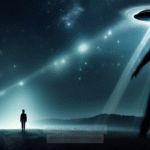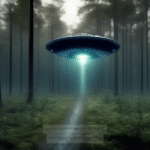Can Scientific Testing Validate the Existence of Psychic Abilities?
Can Scientific Testing Validate the Existence of Psychic Abilities?
Psychic abilities have long fascinated humanity, igniting debates among skeptics and believers alike. From clairvoyants who claim to see the future to mediums who purport to communicate with the deceased, these abilities challenge our understanding of reality. But can the scientific method truly validate such phenomena? This question is not only intriguing but also essential in bridging the gap between spirituality and science. In this blog post, we will delve into the complexities of psychic abilities, exploring documented cases, scientific studies, and the implications of these findings on our understanding of consciousness and human potential.
Historical Context of Psychic Abilities
The concept of psychic abilities has roots in various cultures and traditions throughout history. Ancient civilizations often revered individuals with extraordinary perceptual skills. For instance, the Oracle of Delphi in ancient Greece was consulted for prophetic insights, while shamans in indigenous cultures performed rituals to connect with the spiritual realm. In the 19th century, the rise of Spiritualism brought psychic phenomena into the limelight, with mediums like Helen Duncan gaining notoriety for their supposed abilities to contact the dead.
However, it wasn’t until the late 20th century that psychic phenomena began to receive serious scrutiny from the scientific community. The establishment of parapsychology as a field aimed to investigate these claims through controlled experiments and empirical evidence. Researchers like Dr. J.B. Rhine at Duke University conducted pioneering studies on extrasensory perception (ESP), laying the groundwork for future explorations.
Core Concepts of Psychic Abilities
At the heart of psychic phenomena are concepts such as telepathy, clairvoyance, and precognition. Telepathy refers to the ability to transmit thoughts between individuals without using known human senses. Clairvoyance involves perceiving events or information that are not accessible through ordinary sensory channels. Precognition entails predicting future events, often under circumstances where logical deduction is impossible.
The challenge in scientifically validating these abilities lies in their elusive nature. Traditional scientific methodologies rely on reproducibility and observable phenomena, which psychic abilities often evade. As a result, the scientific community remains divided, with some researchers advocating for the study of these phenomena and others dismissing them as pseudoscience.
Notable Documented Cases
One of the most famous documented cases of psychic ability is that of Uri Geller, an Israeli performer who gained fame in the 1970s for his claimed abilities to bend spoons and perform psychokinetic feats. While Geller’s performances elicited both fascination and skepticism, they prompted several scientific investigations. In one study conducted at Stanford Research Institute, Geller was tested under controlled conditions, leading researchers to conclude that his abilities could not be easily dismissed as trickery. However, the results were also met with skepticism as critics argued that the experiments lacked rigor.
Another intriguing case involves the “Scole Experiment,” which took place in England during the late 1990s. A group of researchers studied a team of mediums who purportedly produced physical phenomena during séances, such as materialized objects and voices. The findings from this experiment remain controversial, as critics argue that the results were not adequately verified, while supporters claim they witnessed genuine paranormal events.
Scientific Testing and the Methodology Behind It
Scientific testing of psychic abilities often employs methodologies such as double-blind experiments, statistical analyses, and control groups to mitigate bias. For instance, in studies assessing telepathy, participants are often placed in separate rooms and asked to guess images being viewed by a sender. The challenge lies in creating conditions that eliminate the possibility of normal sensory communication or chance.
One of the most noteworthy studies was conducted by the Princeton Engineering Anomalies Research (PEAR) lab, which operated from 1979 to 2007. The lab focused on exploring the interaction between consciousness and physical systems, using random number generators (RNGs) as a testing ground for psychokinetic abilities. The results suggested that human intention could influence RNG outcomes, leading to debates about what this might signify regarding consciousness and reality.
Practical Implications of Psychic Research
The implications of validating psychic abilities extend beyond mere curiosity; they could fundamentally alter our understanding of consciousness, human potential, and the nature of reality itself. If psychic phenomena are proven to exist, it may suggest that consciousness transcends the physical brain, opening doors to new paradigms in psychology, medicine, and spirituality.
For instance, psychic abilities could have practical applications in therapy. Some practitioners believe that individuals with clairvoyant abilities may offer insights that can aid in emotional healing. Moreover, if psychic abilities are harnessed, they could potentially aid in problem-solving or decision-making processes in various fields, including business and law enforcement.
Alternative Perspectives on Psychic Phenomena
While many researchers are open to exploring psychic phenomena, there are also skeptics who argue against the validity of these claims. Critics often point to the lack of reproducibility in psychic testing, suggesting that many documented cases can be attributed to psychological tricks, sleight of hand, or even cold reading techniques. Cold reading is a technique used by some psychics where they make high-probability guesses based on subtle cues from their clients.
Moreover, some argue that the anecdotal nature of most psychic experiences lacks the empirical rigor required for scientific validation. They advocate for more stringent methodologies and higher standards of evidence before accepting psychic phenomena as legitimate. This division between skeptics and proponents highlights the ongoing debate within the scientific community regarding the nature of reality and consciousness.
Common Misconceptions and Clarifications
There are several misconceptions surrounding psychic abilities that often cloud the discussion. One prevalent myth is that all psychics are frauds. While some individuals may exploit the phenomenon for monetary gain, many practitioners genuinely believe in their abilities and provide valuable insights to those seeking guidance.
✅ **Key Insight**: Not all psychics are fraudulent; many genuinely believe in their abilities and seek to help others.
Another misconception is that psychic abilities are only for a select few. Many believe that everyone possesses some form of intuitive ability and that with practice, these skills can be developed. This perspective encourages individuals to explore their potential and enhances the understanding of human consciousness.
Best Practices for Investigating Psychic Phenomena
For those interested in exploring psychic phenomena, there are several best practices to consider. First, approach the subject with an open yet critical mind. Engaging in controlled experiments and practicing mindfulness can help hone intuitive abilities. Joining groups focused on psychic development can provide support and foster a community for exploration.
Furthermore, maintaining a journal to track experiences, thoughts, and feelings can also facilitate self-discovery. Recording instances of intuition can reveal patterns and enhance one’s understanding of their own psychic experiences. Keeping personal biases in check and seeking empirical evidence are also essential for a balanced investigation.
Future Developments and Ongoing Research
The future of psychic research is promising yet uncertain. As technology advances, new methods for studying consciousness and psychic abilities are emerging. For example, brain imaging techniques like functional Magnetic Resonance Imaging (fMRI) are being used to observe brain activity during psychic tasks, potentially shedding light on the neurological underpinnings of these abilities.
Furthermore, interdisciplinary collaborations between neuroscientists, psychologists, and parapsychologists may yield more comprehensive insights into the nature of consciousness and psychic phenomena. As societal attitudes towards these abilities evolve, we may witness a shift in how such phenomena are studied, moving from skepticism to curiosity and open inquiry.
Conclusion: Bridging the Gap Between Science and Spirituality
The exploration of psychic abilities invites us to question the very fabric of reality and human consciousness. While scientific testing has yet to provide definitive answers, historical cases and ongoing research indicate that these phenomena deserve attention and rigorous investigation. By approaching these topics with an open mind and a critical lens, we can begin to bridge the gap between science and spirituality, paving the way for future discoveries that may redefine our understanding of what it means to be human.
As we continue to explore the boundaries of consciousness and human potential, the question remains: Can scientific testing validate the existence of psychic abilities? The journey to find answers is as compelling as the phenomena themselves, inviting us all to remain curious and open to the mysteries that lie ahead.
Other Articles
Recent Posts
- What Happened to Flight MH370? The Conspiracy Theories That Still Haunt Us
- What Secrets Lurk Within the Walls of the Infamous Trans-Allegheny Lunatic Asylum?
- What Evidence Supports the Existence of Bigfoot in the Pacific Northwest?
- What Happened to the Indus Valley Civilization? Unraveling the Mysteries of Ancient Urban Life
- Can Telepathy Be Scientifically Proven Through Laboratory Evidence?







